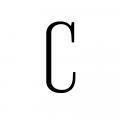The online portal "Copernico. History and Cultural Heritage in Eastern Europe" is now calling for contributions to our next thematic focus: “Childhood and Youth in Eastern Europe”. The aim is to shed light on the day-to-day lives and environments of children and young people in Eastern Europe, and thereby also to reflect on the categorizations of childhood and youth, which have by no means remained static throughout history.
Text
Contributions for this upcoming area of focus will be published from mid-2024 and will aim to shed light on the day-to-day lives and environments of children and young people in Eastern Europe. We have deliberately kept the theme broad and open and offer the following questions as a guide:
- Day-to-day lives and environments: What did everyday life and the various worlds inhabited by children and adolescents look like across this most diverse region? What were the particularities of and differences between urban and rural environments? How and where were young people integrated into social processes and procedures, and how were they affected by them? What role did membership in specific groups play in early life? How did social, political, and cultural contexts shape these young lives? What role did aspects of multiculturalism or transculturality play for children and adolescents – also in comparison to the adult world? In what other ways could children's and adults' worlds of experience differ? What visibility did children and adolescents have in the societies of Eastern Europe?
- Upbringing, school, education, and training: How were schools and education organized and designed? How did they differ in different regions? How and where were cultural and social contexts reflected in school? Where were they not? What role did questions of cultural identity and symbolic orders of the adult world play? How were they transmitted to children and young people? Which institutions and personalities stood out from the rest? What – possibly competing – role did specific secular or religious entities play?
- Family and parenthood: What is the role of the family as a social group? What did parenthood mean at different times? What kinds of public discourses, forums and media existed?
- Artistic and cultural testimonies and representations: How are childhood and adolescence represented and processed in visual art, literature, and music? What did art and culture for children and young people look like, what role did they play as audiences and recipients? What did children's books, primers, and textbooks convey and in what ways?
- Objects and sources: The portal also welcomes the presentation of (museum) objects and sources, for example toys, relevant utilitarian and household objects, other goods and products for children, inventories from relevant institutions (schools, orphanages), or children's and school books. Historical accounts and records, diary entries, and other ego-documents or sources from memory culture may also be presented and included.
- Discourses of childhood: How did the categorizations of childhood and adolescence shift over time? Who spoke about childhood and youth, and in what context?
General editorial notes
Text
We accept contributions of different lengths and formats, from introductory texts to in-depth background articles. The maximum text length is 12,000 characters including spaces. Much shorter contributions are also welcome.
All contributions will be published bilingually and translated into English or – if submitted in English – into German. In addition, all contributions in the portal have a citation recommendation, permalinks and license reference. Longer contributions of at least 10,000 characters are to be published on a publication server in the medium term and provided with a DOI. All submitted contributions will be proofread as part of an internal review process.
For each contribution, we ask that you provide at least one attractive and high-resolution illustration including caption and final rights clearance; further illustrations in as good a quality as possible are welcome. If required, the contributions can also be supplemented by image galleries with a slideshow function.
All authors retain the rights of use for their own texts. Each author receives a profile page in the portal, on which a short biography, selected references and links to personal websites can be presented. We are particularly interested in contributions from younger researchers who would like to use Copernico as a transfer platform for their work.
Further instructions for contributors, illustrations and keywords are available on the portal itself (www.copernico.eu/en/notes-for-contributors) and on request at copernico@herder-institut.de.
The rules of good scientific practice apply.
Deadline and dates
Text
Please send an abstract of max. 300 words with a short description of the planned contribution to copernico@herder-institut.de by 15 September 2023. You will receive feedback by 15 October 2023 as to whether the paper is eligible for inclusion in the thematic focus. The deadline for submissions of finished papers is March 31, 2024, with publication planned for autumn 2024.


